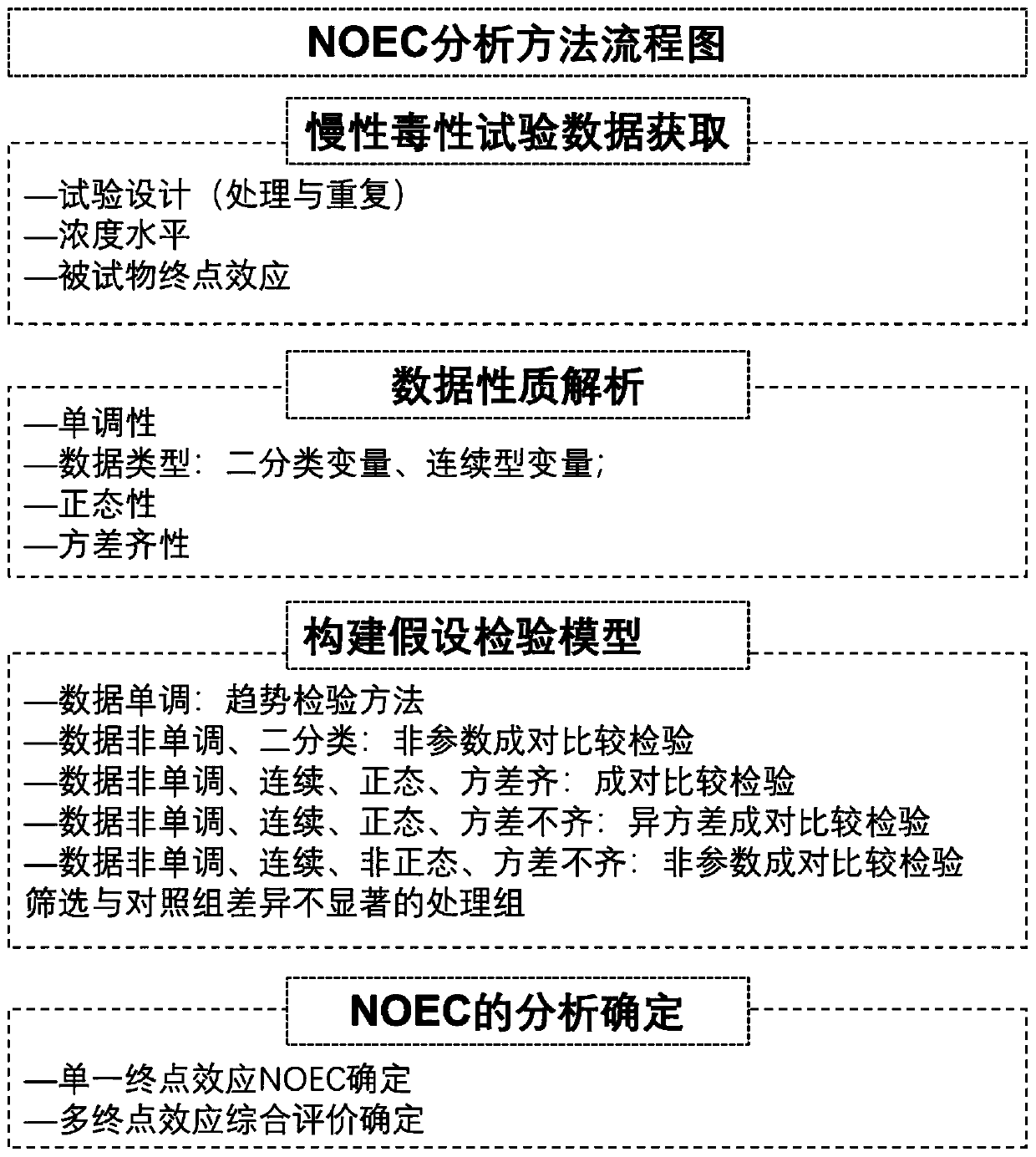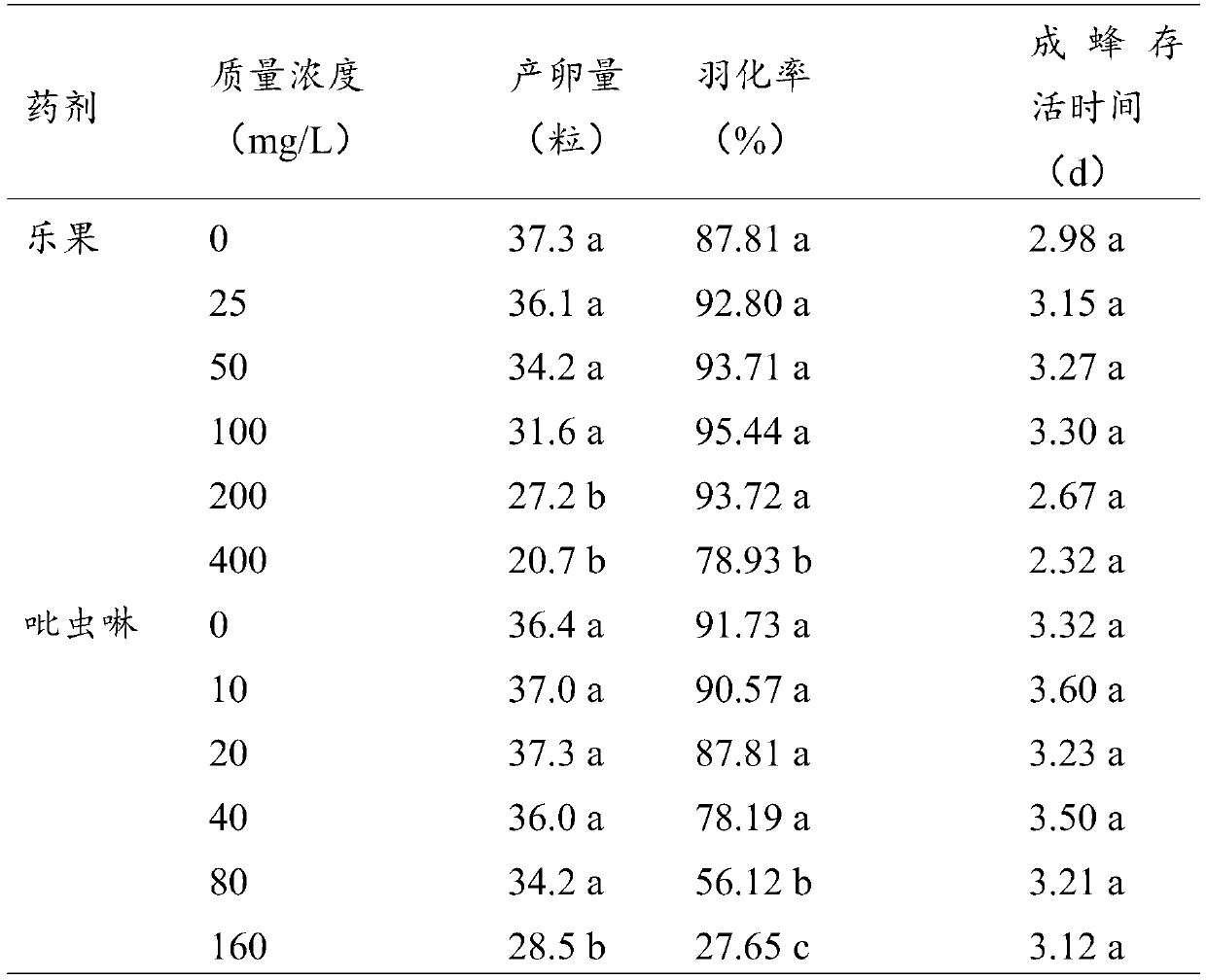Method for analyzing maximum no-effect concentration of chemical acting on organisms
An analysis method and chemical technology, applied in the field of pesticide data analysis, can solve the problems of lack of consideration of data properties, inability to guarantee the accuracy of statistical analysis energy efficiency and results, simplicity and roughness, etc., to achieve the effect of ensuring energy efficiency and accuracy of analysis
- Summary
- Abstract
- Description
- Claims
- Application Information
AI Technical Summary
Problems solved by technology
Method used
Image
Examples
Embodiment 1
[0036] Determination of NOEC of Guole and Imidacloprid on Trichogramma
[0037] The first step is the acquisition of chronic toxicity test data. Obtain the data of chronic toxicity test of chemicals, including test design (treatment and repetition), concentration level and end-point effect of test substance, etc.
[0038] Trichogramma is one of the most widely used and most influential natural enemy insects at home and abroad. As an important means of controlling pests, chemical pesticides may also have toxic and side effects on their natural enemies while eliminating pests. The safety of pesticides to natural enemies was clarified by carrying out experiments on the chronic toxicity of pesticides to Trichogramma corn borer. In the experiment, Trichogramma was used as the test organism, dimethoate and imidacloprid were used as the test chemicals, and the end-point effects were egg production, eclosion rate and adult survival time. Each test substance test group has 6 treatme...
Embodiment 2
[0061] The first step is the acquisition of chronic toxicity test data.
[0062] Take the quail chronic toxicity (growth and reproduction) effect test as an example. The widespread use of pesticides in agricultural production has had a huge impact on birds that mainly forage on farmland. Birds exposed to low doses or slightly less toxic pesticides will not cause death, but their growth and reproduction behaviors will be affected. By evaluating the results of environmental toxicology model biological toxicity tests on birds, combined with field exposure levels, and extrapolating to the wild environment, the environmental risks of pesticides can be more fully understood.
[0063] In the experiment, quail was used as the test organism, acetamiprid and methacrylic acid were used as the test chemicals, and the end-point effects were body weight, average daily egg production and stillbirth ratio. Each test substance test group has 6 treatment concentrations (including 1 blank cont...
PUM
 Login to View More
Login to View More Abstract
Description
Claims
Application Information
 Login to View More
Login to View More - R&D
- Intellectual Property
- Life Sciences
- Materials
- Tech Scout
- Unparalleled Data Quality
- Higher Quality Content
- 60% Fewer Hallucinations
Browse by: Latest US Patents, China's latest patents, Technical Efficacy Thesaurus, Application Domain, Technology Topic, Popular Technical Reports.
© 2025 PatSnap. All rights reserved.Legal|Privacy policy|Modern Slavery Act Transparency Statement|Sitemap|About US| Contact US: help@patsnap.com



